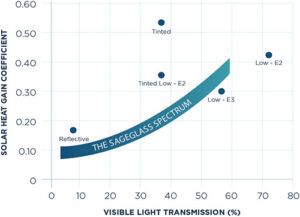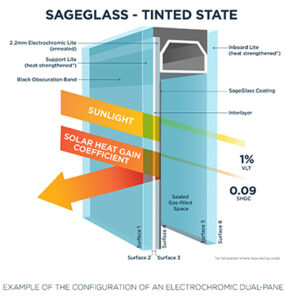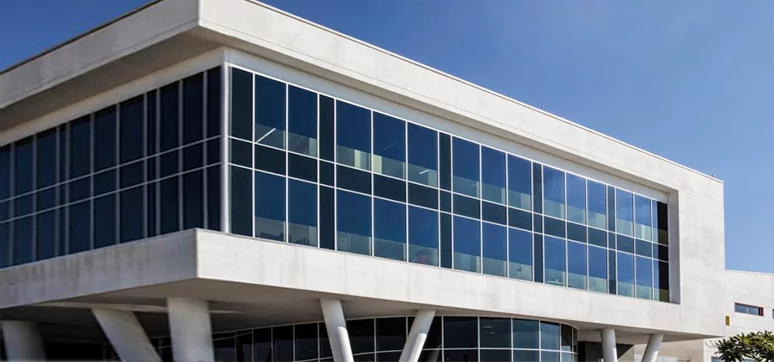In the most recent times, we have all at some point been left feeling boxed up thanks to the pandemic. While we can all choose to ride out of social isolation to “normalcy”, we cannot ignore the importance of how windows have played a crucial part during our lockdown. In most countries, people have sung to each other in unity, and to propel mental wellbeing – through windows. One particular social media group started a trend called “View from my Window” which united millions of people from all over, where they shared pictures of their views- thereby enabling members to travel virtually. Well, let’s say – we were all “connected” through a glass pane.
We chose windows as means of communication, be it by giving a standing ovation to front liners or singing out to each other in unison. Our doors may have been closed during the pandemic, but our windows were open. All of this goes on to show how fenestration openings are not just a part of the design but are a part of occupant wellness. Windows work with you constantly to improve indoor quality.
Energy-Efficient or Healthy Buildings?

It is imperative for us on the construction platform to start thinking deeply about the materials being used. As the world is moving towards smarter ways of functioning, we need to adapt our façade to the smarter as well. To think about it, our weather conditions outside are ever-changing. We pass through different seasons, and we need to move towards façade solutions that adapt to our external environment.

From the very beginning of architecture, man has sought to bring sunlight into his buildings and thus was born the window. For centuries, buildings have been designed in clever ways to maximise the admission of daylight, for that was the only source of light. However, in the last century or so, with the advent of electric light, building design has changed to create deeper floor plates and interiors solely lit with electric light. As a result, in the last century, access to daylight has declined in our built environment.
In recent years, we have come to notice that many of the green-certified buildings are actually not any more efficient. This has led to the initiation of energy performance verification requirements of the as-built designs. In parallel, the push for increased energy performance in buildings has also given rise to significant debate about the role of windows, and more importantly, the amount of glass that should be used (Wilson 2010; Shuttleworth 2008). Windows are often seen as the weak link in a building because of their lower insulation performance and higher solar heat gain compared to a solid wall.
The window-to-wall ratio debate within the green codes especially is leading to a dichotomy between providing acceptable window areas for daylighting and views and achieving energy-efficiency targets, all while providing occupant visual and thermal comfort. This is a major challenge for “green building” design as is pictorially represented in Figure 1.
An Elegant Solution

We say that the world is at our fingertips! Indeed, yes and now with our electrochromic glazing solution, which can, at the touch of a button, with a swipe in a mobile application, or with a higher level command from a building automation system, modulate its solar heat gain coefficient (SHGC) and visible light transmission over a wide range, stopping at points in between (e.g., a range of 60% to 1% in visible light transmission and 0.41 to 0.09 in SHGC), can provide an elegant solution to this problem (see Figure 2).
EC glass saves energy in all climate zones by providing passive solar gains during heating seasons, minimising cooling loads during cooling seasons and providing maximum daylight harvesting potential, replacing the use of electric lights with natural light in all seasons. Additionally, because products today can achieve transmissions of 1%T or less, they can control glare without using blinds, thus preserving the view and connection with the outside in contrast to mechanical alternatives, which block or mar the view. Studies have shown that 1%T is required to be able to control the glare (LBNL 2006; Kelly et al. 2013).
EC coatings can be cleanly integrated into a double or triple-glazing unit just like traditional coatings (see Figure 3), and different exterior aesthetics can be achieved by adding tints or another coating to the exterior glass pane. The ability to modulate the sun’s light and heat provides the designer with a controllable heat and light valve for the building; the amount of light and heat coming into space is tuned depending on the exterior environmental conditions and the needs of the occupants.
By dynamically controlling the light and heat flow, significantly more energy savings can be captured than when using a static façade solution as well as providing enhanced occupant comfort whilst maintaining exterior views. As a result, the use of EC glass provides an architect with the ability to design with more glass, thus providing the needed access to daylight and views without energy or comfort penalty.
Design Flexibility without Energy Penalty

Because of the ability to dynamically control the heat flows into a building, EC glass can provide additional architectural freedom because more glass can be used, especially on challenging façades, without energy penalty. For example, in a recently commissioned villa in Dubai Hills, United Arab Emirates, the architect was able to add a grand window element to the entrance area, without compromising on the energy efficiency criteria.
Mr Divya Golash from Al Shandagha Architects has felt that dynamic glazing has provided the required efficiency as well as keeping the design intact – “The most important benefit is that the glazing is dynamic, so we can switch it to the tint level that we want to achieve. Our external conditions are not static, the weather and sun change dynamically, so why not have a dynamic glazing solution? We need to have more adaptable and sustainable solutions such as SageGlass in the market. Also since we have the glazing at a height, we had chosen glazing for the area, for ample natural light to come in, without the heat entering into space. So this would save a lot of energy and HVAC consumption could be lowered”.
Conclusion
The impact of being able to design with more glass without energy or comfort penalty should not be underestimated. In the Middle East, we are often faced with the challenge of having buildings that have a high WWR, but then because of the intensive heat transfer, the HVAC consumption is skyrocketing. Glass is a key architectural design tool and provides significant design flexibility for architects. Sustainable design standards and codes recognise the need to use glass to provide occupants with access to daylight and views, because of the positive impact that it has on people’s health and well-being, yet doing so often requires compromising energy performance and at times occupant thermal and visual comfort especially with the weather condition around.
Dynamic glazing can relieve the constraints enforced on designers by static building envelopes when balancing architectural design with occupant comfort and energy efficiency. The improvements in EC glass aesthetics and functionality described herein clearly demonstrate that EC glass can provide an elegant façade solution that achieves both the competing goals of strong energy performance and access to daylight and views, without compromising occupant thermal and visual comfort or the aesthetics of the façade design. The ability to maintain architectural design freedom while still providing an energy-efficient AND comfortable building is invaluable. This value will continue to increase as energy efficiency targets rise and as the importance of creating people-friendly workspaces is further appreciated.
(Research credits: Ryan Park and Maure Creager)














